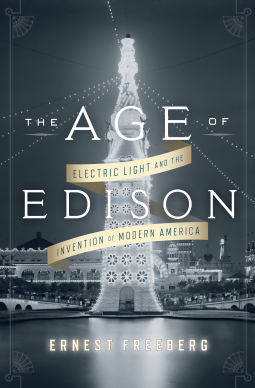
Age of Edison, The
Electric Light and the Invention of Modern America
by Ernest Freeberg
This title was previously available on NetGalley and is now archived.
Send NetGalley books directly to your Kindle or Kindle app
1
To read on a Kindle or Kindle app, please add kindle@netgalley.com as an approved email address to receive files in your Amazon account. Click here for step-by-step instructions.
2
Also find your Kindle email address within your Amazon account, and enter it here.
Pub Date Feb 21 2013 | Archive Date Mar 05 2013
PENGUIN GROUP The Penguin Press | Penguin Press HC, The
Description
The lightbulb became a catalyst for the nation’s transformation from a rural to an urban-dominated culture. City streetlights defined zones between rich and poor, and the electrical grid sharpened the line between town and country. “Bright lights” meant “big city.” Like moths to a flame, millions of Americans migrated to urban centers in these decades, leaving behind the shadow of candle and kerosene lamp in favor of the exciting brilliance of the urban streetscape.
The Age of Edison places the story of Edison’s invention in the context of a technological revolution that transformed America and Europe in these decades. Edison and his fellow inventors emerged from a culture shaped by broad public education, a lively popular press that took an interest in science and technology, and an American patent system that encouraged innovation and democratized the benefits of invention. And in the end, as Freeberg shows, Edison’s greatest invention was not any single technology, but rather his reinvention of the process itself. At Menlo Park he gathered the combination of capital, scientific training, and engineering skill that would evolve into the modern research and development laboratory. His revolutionary electrical grid not only broke the stronghold of gas companies, but also ushered in an era when strong, clear light could become accessible to everyone.
In The Age of Edison, Freeberg weaves a narrative that reaches from Coney Island and Broadway to the tiniest towns of rural America, tracing the progress of electric light through the reactions of everyone who saw it. It is a quintessentially American story of ingenuity, ambition, and possibility, in which the greater forces of progress and change are made visible by one of our most humble and ubiquitous objects.
Available Editions
| EDITION | Other Format |
| ISBN | 9781594204265 |
| PRICE | $27.95 (USD) |



